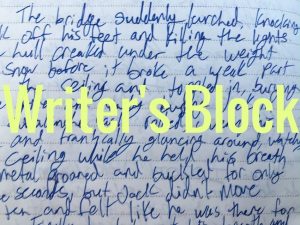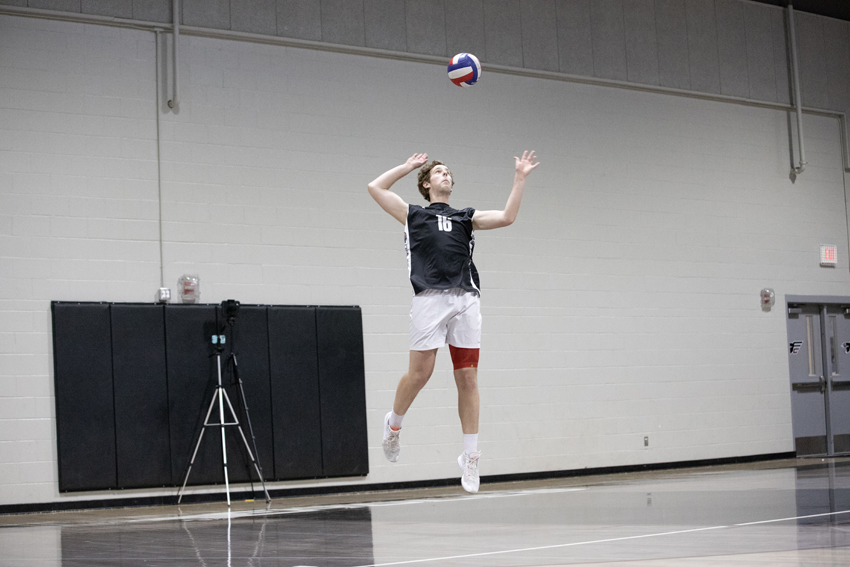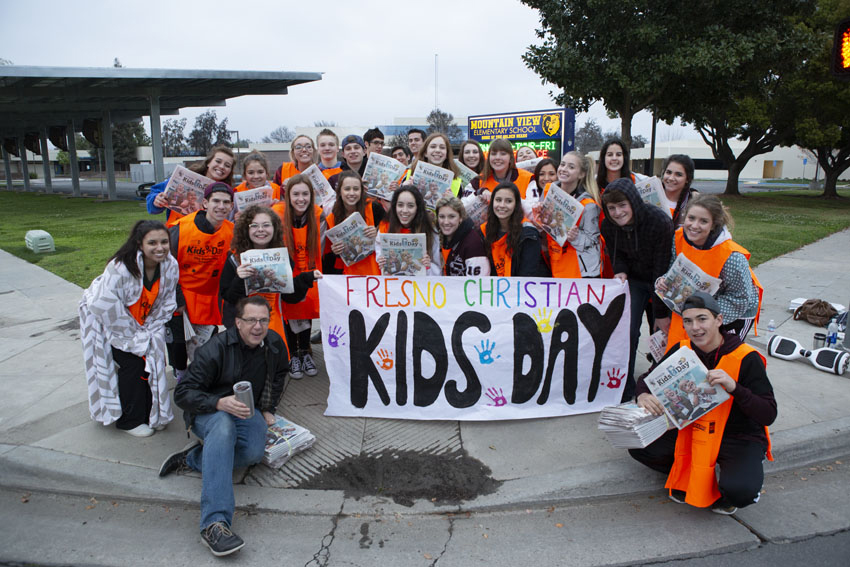Overcoming writer’s block
[media-credit id=118 align=”alignright” width=”300″] [/media-credit]
[/media-credit]
Writer’s block stinks. But if you only write when you’re inspired, your project will never be finished (unless you’re always inspired. In which case, please share you secret!). So what on Earth are you supposed to do to overcome writer’s block? Well, climb over, dig under, go around the block. Here’s some techniques I try when I can’t seem to get anything to work.
(Just a heads up that I am by no means an experienced script writer in any way, shape, or form. This is simply just things I’ve learned from writing in general and what has worked for me).
Start from the end
Do you know where the scene ends? Start there. How do you get there? Write it backwards. How do you get the characters their emotionally? Physically? What’s each of their goals in this scene, and how are they trying to reach it?
Force it
I don’t mean to submit a forced, unfitting scene in the final product. But sometimes to find the right scene, you have to power through one that doesn’t feel like it fits. Here, let me try to explain it better. Once I was writing a scene that took place in a science classroom. Nothing there was working. The setting didn’t fit, dialogue didn’t flow correctly, and accomplishing the end goal of the scene was difficult. Incredibly frustrated, I kept writing through it. Finally, in the process of writing, an idea came to set the scene on a class field trip at a planetarium instead. In that process, the planetarium became a huge piece of the script, involving into an integral part of the story. Sometimes forcing through a scene reveals the weak spots and brings about a better way to write it, even if it’s something totally different.
Work against the goal
By this I don’t mean to never accomplish what your characters are setting out to do, but give them obstacles. Give them tension. If you have to use exposition, give it in a clever way (that’s something in the book Crafty TV: Thinking Inside the Box. It’s a helpful book, check it out). Give something that works against them. Which is more interesting, the scene where the arguing protagonist and other character are just hanging out, or the scene where they argue while trying to help in a nursery full of sleeping kids they don’t want to wake? And isn’t exposition more fun if, instead of handing it to us obviously, it’s concealed cleverly? The character connects the dots and finds the break in the case, but can’t share just yet because they’re currently getting a filling at the dentist. That article in the paper talked about what they needed, but the wind blew it away before they could get to it. This also makes an opportunity for visual comedy sometimes; giving the information in an amusing way.
Get the ball rolling
Type and don’t stop. Don’t care about contradictions, grammar, clarity, or any rules on how to write. Seriously. “Word vomit” (I know, gross term) onto the page. Do this with your plot, if you’re stuck. Things tend to spring to mind when you do this, and if you just write it all, as fast as possible, as brief as possible, with no worries, it’s surprising what you get out of it. Whole new characters, conflicts and elements to the story. This also works well if you have a friend who is willing to let you talk or text this jumble of ideas to them. Just go, go, go and don’t stop.
Take a walk
If a scene really just isn’t working, take a break! Go for a walk around the block, play with your dog, pet your cat, stare at your goldfish. Don’t abandon the story all-together, make sure you come back to it. But coming back with a fresh pair of eyes really changes things.
Don’t edit as you go
Doing this is discouraging (for me, at least). You start to catch mistakes, you discover plot holes, you start to rewrite… stop! Editing is for later, when you’ve finished now. If you try to fix it before you’re done, it’ll never be done. Just let it be. Try not to let your inner critic get to you. Just know every writer has faced the same, and all that stuff that you want to edit can wait till later.
I hope this helped! To read my last blog post, check out Swedefest 15: What is it?
This writer can be reached via Twitter @ejLadd and via email: Emily Ladd.











![[Video] 100th CSPA Spring Journalism Conference](https://thefeather.com/wp-content/uploads/2024/04/20240308-cspa-crown-002.jpg)
![[Video] FCS College Fair](https://thefeather.com/wp-content/uploads/2023/10/20231003-collegefair-012_1.jpg)



